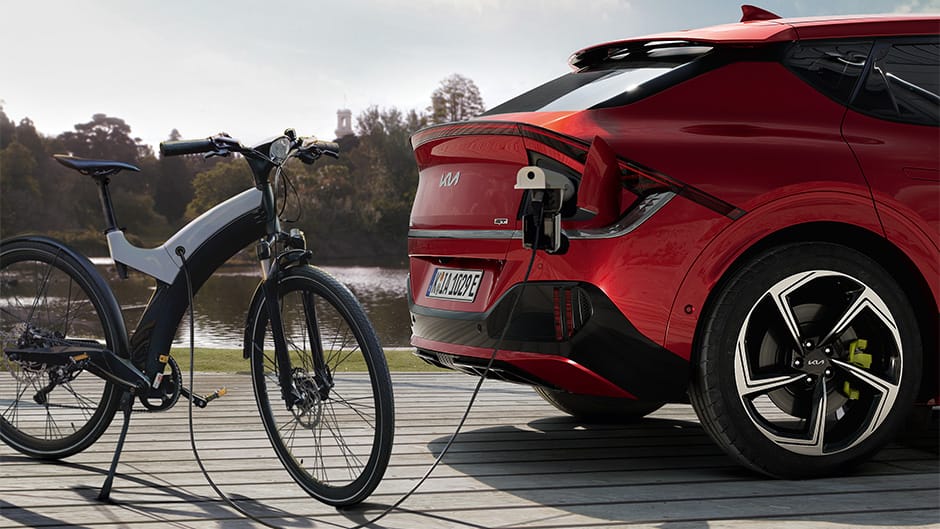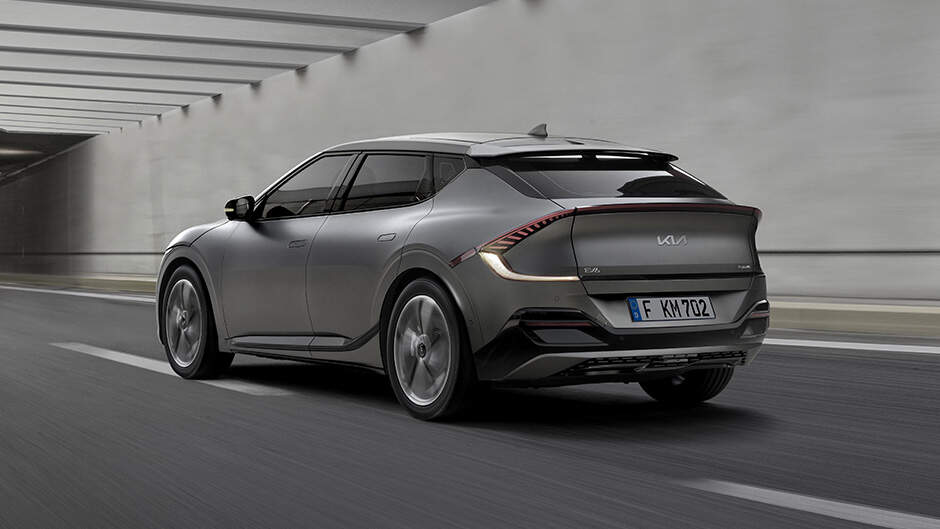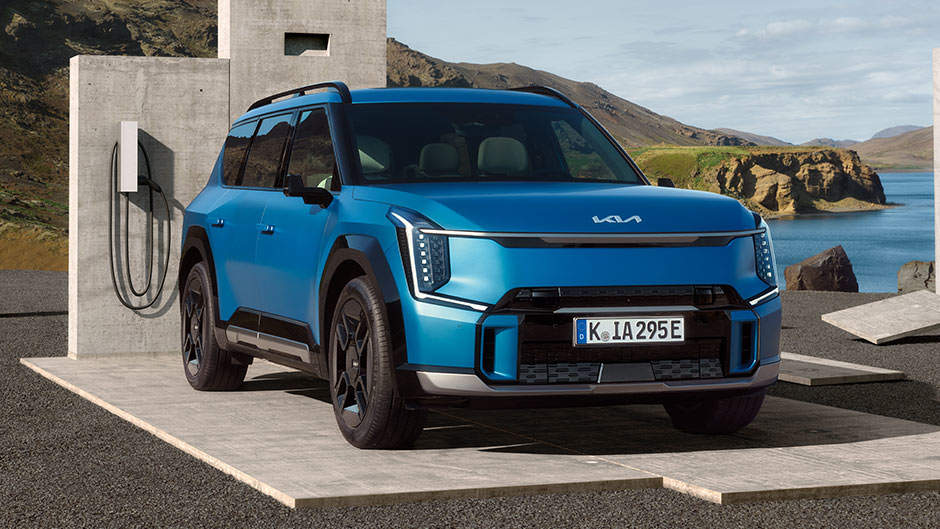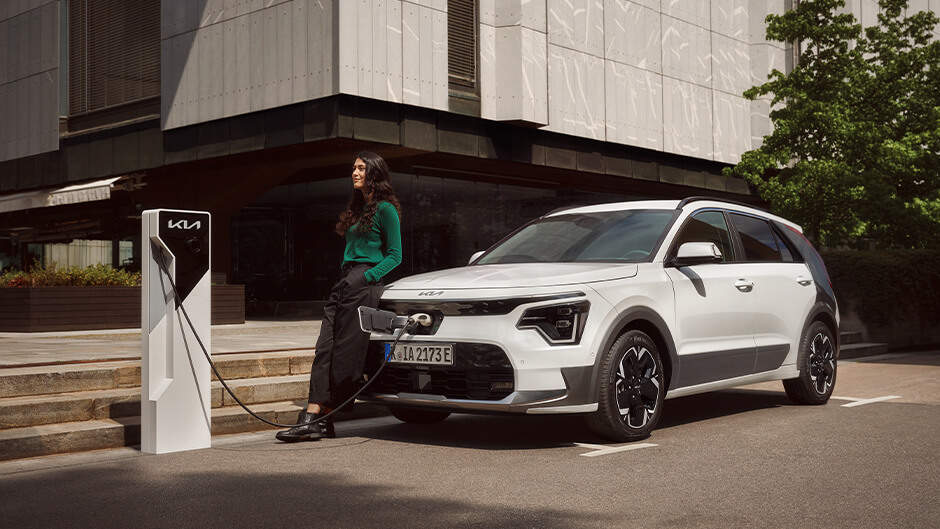What happens if my electric car runs out of charge?

As more and more drivers favour electric
over traditional ICE-powered vehicles, we’re learning more about how the EV experience differs from driving a traditional or petrol car. With differences come uncertainties, and there’s one question in particular that continues to attract much discussion: “What happens if my electric car runs out of charge?”
With an expanding national charging infrastructure and advancing onboard technology, the real likelihood of an EV running out of charge and leaving you stranded is very slim. However, it’s still important for EV owners to understand the implications of having a battery with no electric charge.
At Kia, we know that switching to electric is a big change, so we’ve compiled a guide to help you understand electric range
and what happens to electric car batteries when they run out of charge.

How many miles does an electric car last?
The range of EVs varies depending on the battery voltage and technology of the specific model and manufacturer. According to the Society of Motor Manufacturers and Traders
(SMMT), the average EV range in the UK is currently 236 miles. This figure is up from 210 miles in 2020 and is nearly three times the weekly distance driven for an average UK driver.
At Kia, we pride ourselves on building electric cars
that deliver ultimate convenience and driving pleasure, with an electric range that goes the distance. Our industry-leading models are some of the longest-range electric cars
currently available on the UK market, with the EV6
boasting a range of up to 328 miles and the EV9
offering up to 349 miles on one charge.
It’s important to note that EV range can also be impacted by external factors, such as weather, driving style, use of other electrical components, the vehicle’s current load and condition of the tyres. While some of these factors are out of your control, there are numerous things EV drivers can do to maximize the range of their electric car. Read our blog to find out more about how to increase your electric car’s range
.

What happens when electric car batteries run out of charge?
Like any other kind of battery, if you don’t recharge an EV battery
, it will run out. As EVs are powered solely by their electric battery, the vehicle won’t be able to operate if the battery runs out of charge.
While the idea of being stranded with no electric power may be a bit scary, it’s actually incredibly unlikely to happen. Nowadays, all electric cars
are fitted with technology that monitors the status of your battery and will alert you when it’s starting to run low.
At Kia, we’ll always keep you in the loop, as our onboard Kia Connect
services will give you constant visibility of your battery’s status, charging percentage and health – all via your dashboard. Kia Connect also provides a comprehensive directory of all public EV charging stations
, including availability information and live fuel prices, so you can easily plan your next charging stop. Even better, when you download the Kia Connect App
, you can view your battery status via your phone and remotely start, stop and schedule charging.
With the rising popularity of electric cars, EV charging infrastructure is also rapidly expanding. Kia Charge
has its own network of over 40,000 charging stations in the UK alone and over 630,000 across Europe.
With accessibility to an expansive network of public charging stations and exclusive home charging
tariffs, as well as intelligent battery technology and updates, there’s no need to worry about your Kia running out of charge.

Can you tow an electric car?
If you run out of fuel on a motorway in a petrol or diesel car, your car would usually be towed. While electric cars can be towed, it’s not quite as simple as towing an ICE-powered vehicle.
When you tow a petrol or diesel car, they are put into neutral and dragged behind the tow truck. Because EVs don’t have a neutral gear, trying to tow them in drive or reverse will create a build of kinetic energy that will damage the battery. For this reason, electric cars can only be towed on flat-bed trucks, where they sit on the body of the truck rather than being dragged behind it.

What to do if your electric car battery dies
If your electric car battery dies while you’re on the road, pull over to the side of the road as soon as you can do so safely. Put your hazard lights on, turn the vehicle off and call for roadside assistance. Depending on the specifics of your situation, the roadside recovery service may provide a portable charger to give your EV enough charge to drive to the closest charging point. Alternatively, they may tow the car on the flat-bed truck to the nearest charging point.
When you buy a new Kia, you receive our unique and comprehensive roadside assistance
package, free for the first 12 months. Designed for Kia owners and provided by the RAC, our cover includes other exclusive benefits, such as 24-hour roadside and at home rescue, as well as recovery if we cannot repair your vehicle at the roadside.
If you’re ready to make the switch, explore our award-winning range of electric cars
and get to know how we guarantee ultimate convenience with roadside assistance
, Kia Charge
and Kia Connect
.
Images shown are for illustration purposes only and may not be to full UK specification. Features shown are not standard across the Kia model range and availability will vary dependant on model. For further details please refer to the individual model specification sheets.
Product availability varies by models. To find out which products are available for your vehicle, please contact your Kia dealer.
1All Niro EV and EV6 models have the capability to provide vehicle-to-load. Adapter is not standard on all grades, but it is available to purchase as an accessory.
The EV driving range for EV6 & EV9 was determined according to the standardised EU measurement procedure (WLTP). The individual driving style and other factors, such as speed, outside temperature, topography and the use of electricity-consuming devices/units, have an influence on the real-life range and can possibly reduce it.

